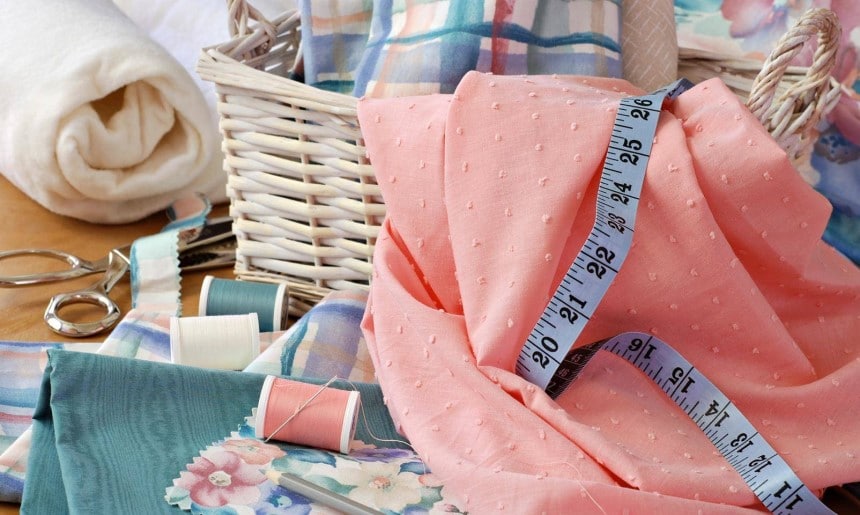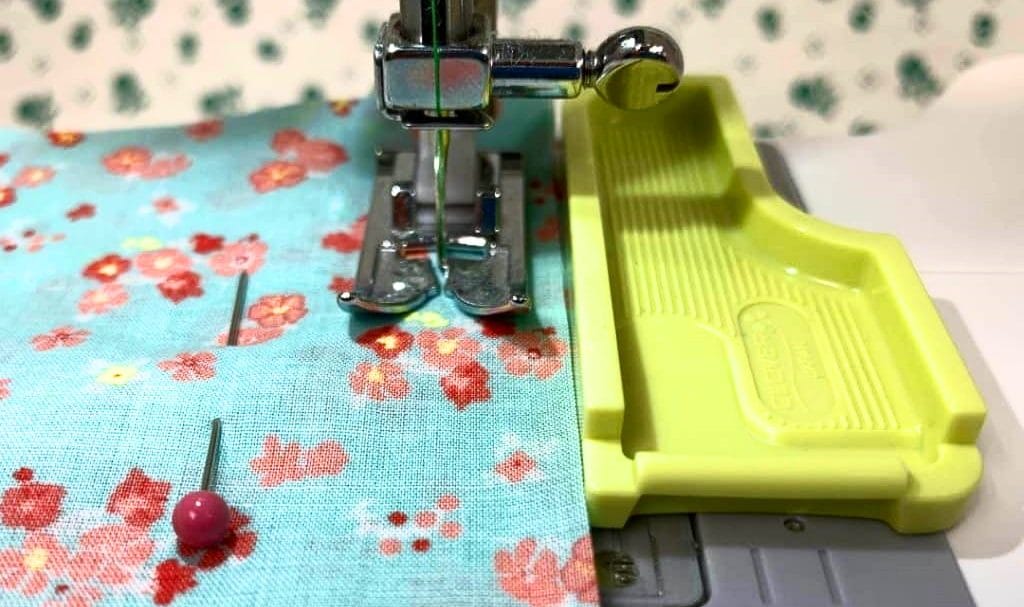

The truth is sewing is not hard, it is basic stuff, really. However, sewing well is not easy either and it is even harder to sew perfectly. Worry not nonetheless, with the sewing tips and techniques compiled in this article you will be well on your way to making some decent stitches in just a couple of paragraphs. Here is a compilation of sewing tips for beginners that focuses on the basics such as hand sewing tips, choosing needles, hoops and threads and even lets you in on how to handle different fabrics. It gets a little technical with sewing machines but with the sewing machine tips in this article, machine stitching will no longer be an unsolvable equation. So read on and get a few tricks up your sleeves (pun intended) for your next sewing project.
Hand sewing is the most basic aspect of sewing used to stitch clothes way back when horse carriages were the only piece of technology. We still use it today because it is convenient for small scale stiches or for those that are just obsessed with detail. Hand sewing can be done anywhere as long as you have the right instruments.
The most fundamental instruments for hand sewing include; hand sewing needles, a pair of scissors, sewing threads and a thimble. For a start on simple hand sewing projects, these sewing tools will get you by just fine. A thimble may seem out of place in this list of instruments but it does come in handy if you want to avoid pricking your fingers while sewing especially as a beginner. It is also important to note however, that hand sewing needles are different from machine sewing needles.
Speaking of needles, using the wrong needle is quite common even for seasoned sewers which could lead to needle breakage, difficulty in penetrating the fabric and consequently poor stitches. These do not sound like very encouraging results for a first time sewing experience. So first you need to determine what your sewing approach is between hand sewing and machine sewing to determine which category of needles you working with.
Hand sewing needles a commonly identified by their needle holes located at the back blunt end of the needles. These needles vary in length alongside a differentiated size in needle holes which aids in specialization based on the sewing purpose.
Machine sewing needles which are identifiable by their needle holes located at the pointy end vary in design especially of the point ends. This is supposed to aid in the specialization of different fabrics.
Sewing threads are among the most diverse sewing equipment and not just in color. There are different thread types ranging from cotton to metallic threads that serve different purposes. Commonly used threads include cotton threads for natural fibers, elastic threads for elastic fabric, embroidery thread for decorative sewing, and upholstery thread for heavy duty fabric. However, it gets trickier with invisible threads which are used to make unnoticeable stitches.
Here are some noteworthy tips for sewing with invisible thread; always use a small needle, remember to lock your stitches, and always check you thread’s stitch path.
All in all remember to choose your threads according to the purpose and fabric.
Most sewers on the onset of their sewing experience overlook the impact of choosing the right fabric. An important sewing tip especially when it comes to fabric is that it is more than just the color or the pattern on the material. Materials such as knits, denim, chiffon, velvet and denim are very hard to sew and are best to be avoided as a beginner. Cotton on the other hand especially of the 100% broadcloth or a 50/50 cotton blend is quite encouraging. This is a good fabric to start with as you build your confidence towards more challenging sewing projects.

Hoops are commonly used for embroidery sewing since they are quite effective in stretching the fabric. They are the solution tip for sewing stretchy fabric and they come in different materials (metal, wood and plastic) sizes and shapes including; circular, rectangular, oval or as scrolls. Choosing the right hoop depends mostly on these factors. For instance, the bigger the bigger the embroidery project the more sizable your hoop should be, whereas, the shape helps guide the pattern of the embroidery within the hoop’s frame.
You now know what you would need for a basic hand sewing or machine sewing project. However, once you up your sewing game to a more experienced level there are more instruments that you may need. Instruments such as pinking shears, sewing pins, a clear sewing ruler, a steam iron accompanied by an iron board of course, a fabric measuring tape and a water soluble marking pen. These tools are quite nifty in handling more skilled sewing projects as you get to measure, mark, cut and press your sewing projects a lot more easily.
Knit is one of the most commonly used fabrics for our general clothing despite the fact that it is among the hardest fabric for a sewer to work with. This is basically because of the knit fabric’s stretchy structure which can cause the sewing outcome to be wrong in so many ways. It can end up with wavy seams, a snapped thread, hollow seams, or even a stretched out or shrunken garment. It is not advisable to start with knits for your beginners sewing projects for the sake of your morale, but if you have to, here are the key tips for sewing knits.
Different knit fabrics stretch in different ways ranging from two way stretches to four way stretches. Understanding the fabric’s stretch and recovery helps to avoid an overstretched or shrunken garment. You would need to hold the fabric in place while sewing. Pins are utile for this function, however, for knits the wrong pin can leave hollow spaces which is not an elegant finish. Alternatively, wonder clips are a viable options but only for holding the edges. Polyester threads are a utile option for knits since other types are vulnerable to the stretching characteristic and will most likely snap.
As for the needles, ball point or stretch needles ought to do the trick. Another needle type that comes in handy for knits is the twin needle which sews zig zag stitches that helps the thread not snap when the garment stretches. Read on for more noteworthy twin needle sewing tips.
When it comes to sewing machines, there is a lot more to consider because just as the name suggests these are machines which means there have a lot more moving parts that work together to create the end result. Here are the most fundamental sewing machine tips to better that end result.
As a beginner there are sewing machines designed for your kind of experience so if you have not purchased one yet, start by getting an easy to use sewing machine. Sewing machines basically use two threads for the top and bottom spools. It is important to ensure that the threads you use are of the same type not just by color but also in terms of size thickness and material. This helps to avoid breakages and jams, and enable a more even tension.
To ensure that your lines are straight and your curves smooth, make sure that you begin gradually as you work the confidence to increase your speed. Focus your eyes on the alignment while moving the stitch. For the curves remember to use both hands in steady motion. You might not get it the first time but practice makes perfect. Also remember to pull back the thread’s tail with one hand at the beginning to avoid a mess since they tend to get tangled in the machine’s moving system.

Fabric is one of the most underrated aspects of machine sewing because a lot of detail is ignored which immensely affects the sewing outcome especially for beginners. First, always straighten out the fabric to avoid crooked stitches. A steam iron press would be ideal in this scenario. The next challenge is picking the right sewing needles for the intended fabric.
Different fabrics respond differently to different sewing machine needle sizes thus you ought to be careful what needle size goes with what fabric for optimal sewing results. Here is a simple guide according to the European needle range of 60 to 120: sewing leather; 110, sewing chiffon; 65, sewing silk; 60, sewing velvet; 70, sewing fleece; 80, sewing neoprene; 100.
It is also important to note that not all sewing machines can utilize the twin needle hence you might want to seek out a machine that does or get an overlock machine (as promised).
And there you have it, a compilation of easy to follow tips on how to sew as a beginner. The contents you have just read are enough to get you well on your way in accomplishing those simple sewing projects your are interested in undertaking. However, if you are interested in making sewing a hobby or a habit or a career then there is a lot more to learn. And above all else, practice, practice, practice.